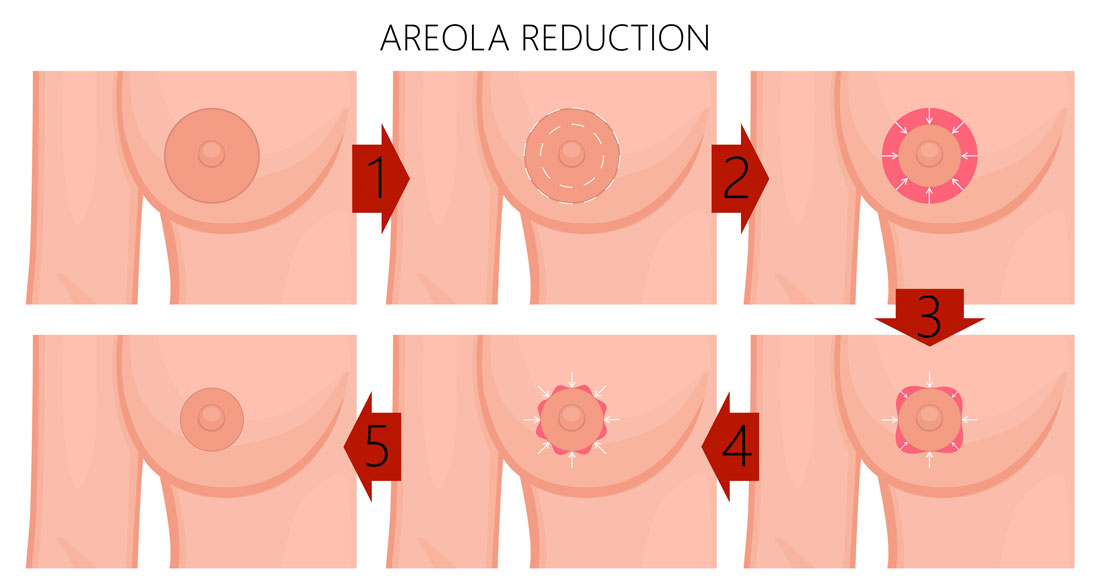Areola Reduction in Greece
Search and Compare the Best Clinics and Doctors at the Lowest Prices for Areola Reduction in Greece

Find the best clinics for Areola Reduction in Greece
No pricing info available
Belgium offers the best prices Worldwide
Price: $ 269
From 54 verified reviews
Filio Zolota, 19 September 2020
Πρώτη φορά ειδα τόσο όμορφο το πρόσωπο μου..Πολύ φυσικό αποτέλεσμα..
Dr Ioannis Gkotsikas, can be found in Pirgos Athinon, Athens, Greece and offers its patients Areola Reduction procedures as well as 37 other procedures, across 3 different procedure categories. At present, there is no pricing information for Areola Reduction procedures at Dr Ioannis Gkotsikas. The pricing information is quite specialised, so it's only available on request. The lead specialist at the Hospital will be carrying out all the treatments, and Dr Ioannis Gkotsikas is accredited by just one known accreditations institute, HESPRAS - Hellenic Society of Plastic Reconstructive and Aesthetic Surgery
- Home
- Greece
WHY US?
At Medijump, we're making medical easy. You can search, compare, discuss, and book your medical all in one place. We open the door to the best medical providers worldwide, saving you time and energy along the way, and it's all for FREE, no hidden fees, and no price markups guaranteed. So what are you waiting for?

Free

Best Price

Widest Selection

Risk-Free
What you need to know about Areola Reduction in Greece

Areola reduction is a surgical procedure to permanently decrease the diameter of one or both of the areolas (the pigmented area that surrounds the nipple). There are no medical reasons to undergo an areola reduction. This procedure is an option for women or men who are not happy with the size of their areolas or how their areolas look. It works well with people who:
-
Are born with areolas that are subjectively large
-
Have stretched areolas due to significant weight loss
-
Have protruding or puffy areolas
-
Experience a significant change in their areolas after pregnancy, breastfeeding, or trauma
-
Have asymmetrical areolas (the procedure can reduce one to match the other)
-
For any other reason, do not like the way their areolas look and feel self-conscious about it.
Areola reduction can be performed on its own or together with other breast enhancement procedures, such as breast augmentation, breast reduction, breast lift, or nipple reduction.
What is the cost of Areola Reduction in Greece?
Numerous variables affect how much a Areola Reduction will cost in Greece. These include the surgeon's training and expertise, the difficulty of the treatment, hospital fees, post-surgery appointments, and other connected costs including anaesthesia, prescription medicine, and medical testing.
It's critical to have a thorough cost breakdown from your surgeon in order to efficiently control costs. Hidden costs can escalate quickly, especially for such health insurance-related procedures, so it's vital to understand the overall cost.
What does a Areola Reduction Procedure Involve?
Before areola reduction begins, an anesthesiologist will give you a local anesthetic. With this type of anesthetic, you will be awake but the affected area will be numbed, so you will not feel any pain. In some cases, you will be given general anesthetic instead, which will put you to sleep.
Next, your doctor will create a circular incision along the perimeter of your areola, where the surgical scar can be more easily hidden, and cut out any extra tissue. Then, the new shape of your areola will be secured with a permanent suture inside your breast. This suture can prevent your areola from stretching. Finally, dissolvable or removable stitches will be used to close the incision site and your surgeon will bandage the area. You will also be fitted with a special post-surgical bra.
How Long Should I Stay in Greece for a Areola Reduction Procedure?
You should be able to leave the hospital on the day of surgery. Still, it is advisable that you stay in Greece for 2 to 3 days to let your body recover before traveling home. Some surgeons may also schedule a follow-up checkup to monitor your healing and remove your stitches (if removable stitches are used). In this case, you may need to stay for a week. It’s vital to be in close proximity to your clinic during this period for immediate post-op assessments, stitching removals, and consultations
What's the Recovery Time for Areola Reduction Procedures in Greece?
Areola reduction has a relatively quick recovery time. You may experience some bruising and swelling for the first few days following your surgery, but you can usually go back to work within a day or two if you have an office job. However, it is important to remember that you need to avoid intense activities, such as exercise and heavy lifting, for at least 3 weeks following your surgery.
It's also imperative to follow your surgeon’s instructions diligently for a swift wound healing process. Lifestyle factors such as good nutrition, regular exercise, and abstaining from harmful habits like smoking can also notably speed up recovery
What sort of Aftercare is Required for Areola Reduction Procedures in Greece?
Your surgeon will give you post-operative instructions, which include restrictions on activity and how to take care of your surgical wounds. Here are a few things that might be included in the instructions:
-
Take pain medicine as prescribed to help with the pain and discomfort that you may feel during the first couple of days of surgery. If your surgeon does not prescribe pain medication, you can take over-the-counter pain medications, such as ibuprofen (Advil).
-
Ask a friend or family to help you during the initial recovery period because you will need help moving around. Even simple tasks can be quite difficult on the first day or two following your surgery.
-
Sleep on your back during the first week of your recovery to avoid injuring or putting excess strain on your chest.
-
Wear a post-surgical bra or a soft sports bra for at least two weeks. These can protect the area and position your nipples for optimal healing. Tell your medical team if your post-surgical bra is too tight as it can lead to healing complications.
-
Avoid sex for about a week.
-
Avoid physical chest contact for about three to four weeks following your surgery.
What's the Success Rate of Areola Reduction Procedures in Greece?
Areola reduction is a very safe procedure. Since it is a relatively simple cosmetic procedure, the success rates are very high and most people who have the procedure reported that they are satisfied with the results. It is important to note, however, that it may take a few weeks before you can appreciate the results. The results can be obscured by the initial period of bruising and swelling. Rresults are normally permanent, resulting in a more proportionate areola in harmony with the size of the breasts, with a reduced risk of looking 'stretched' after pregnancy or breastfeeding.
Are there Alternatives to Areola Reduction Procedures in Greece?
There are a few options to the Areola Reduction that might be taken into account based on personal requirements. For instance, non-surgical procedures like dermal fillers can improve the size and form of your nipples and areolas, albeit these results are transient. The areola can also be reduced by therapies like hormone or oestrogen therapy for people who choose non-invasive treatment choices. These choices, however, each come with a unique mix of benefits and drawbacks. It is advised that you thoroughly examine all of your alternatives with your surgeon in order to make an informed decision.
What Should You Expect Before and After the Procedure
Preparing for a Areola Reduction requires a detailed medical review and lifestyle modifications to ensure you're set for the operation. For instance, you may need to quit smoking, avoid aspirin intake, and certain other medications that might increase bleeding.
Post-procedure, anticipate a degree of discomfort, swelling, and possible bruising. Adhering to aftercare directions and postoperative guidelines can considerably speed up your recovery and reduce the risk of complications. Also, you'll likely have a follow-up check with your surgeon to keep an eye on your progress and any early complications.
What are the Potential Risks of Areola Reduction?
Like all surgeries, areola reduction also comes with potential risks. These include:
-
Scarring
-
Loss of sensation in the nipple
-
Inability to breastfeed
-
Infection.
In some cases, the areola can stretch and widen with time back to its original size, due to aging, hormonal changes, or breastfeeding.
Whilst the information presented here has been accurately sourced and verified by a medical professional for its accuracy, it is still advised to consult with your doctor before pursuing a medical treatment at one of the listed medical providers
No Time?
Tell us what you're looking for and we'll reachout to the top clinics all at once
Enquire Now

Popular Procedures in Greece
Prices Start From $216

Prices Start From $208

Prices Start From $28

Prices Start From $931

Recommended Medical Centers in Greece for Areola Reduction

- Interpreter services
- Translation service
- Religious facilities
- Medical records transfer
- Medical travel insurance
- Health insurance coordination
- TV in the room
- Safe in the room
- Phone in the room
- Private rooms for patients available

- Interpreter services
- Translation service
- Religious facilities
- Medical records transfer
- Medical travel insurance
- Health insurance coordination
- TV in the room
- Safe in the room
- Phone in the room
- Private rooms for patients available

- Interpreter services
- Translation service
- Religious facilities
- Medical records transfer
- Medical travel insurance
- Health insurance coordination
- TV in the room
- Safe in the room
- Phone in the room
- Private rooms for patients available

- Interpreter services
- Translation service
- Religious facilities
- Medical records transfer
- Medical travel insurance
- Health insurance coordination
- TV in the room
- Safe in the room
- Phone in the room
- Private rooms for patients available

- Interpreter services
- Translation service
- Religious facilities
- Medical records transfer
- Medical travel insurance
- Health insurance coordination
- TV in the room
- Safe in the room
- Phone in the room
- Private rooms for patients available

- Interpreter services
- Translation service
- Religious facilities
- Medical records transfer
- Medical travel insurance
- Health insurance coordination
- TV in the room
- Safe in the room
- Phone in the room
- Private rooms for patients available

- Interpreter services
- Translation service
- Religious facilities
- Medical records transfer
- Medical travel insurance
- Health insurance coordination
- TV in the room
- Safe in the room
- Phone in the room
- Private rooms for patients available

- Interpreter services
- Translation service
- Religious facilities
- Medical records transfer
- Medical travel insurance
- Health insurance coordination
- TV in the room
- Safe in the room
- Phone in the room
- Private rooms for patients available

- Interpreter services
- Translation service
- Religious facilities
- Medical records transfer
- Medical travel insurance
- Health insurance coordination
- TV in the room
- Safe in the room
- Phone in the room
- Private rooms for patients available

- Interpreter services
- Translation service
- Religious facilities
- Medical records transfer
- Medical travel insurance
- Health insurance coordination
- TV in the room
- Safe in the room
- Phone in the room
- Private rooms for patients available
Areola Reduction in and around Greece
About Greece
Located at the very bottom of the Balkan Peninsula, Greece is a mesmerizing blend of sun-drenched islands and historical marvels. Boasting approximately 2,000 islands, an impressive 170 among them are inhabited and teeming with life. Greece's geographical charm has been nowhere short of a magnet to travelling enthusiasts, pulling in a spectacular count of over 24 million wanderlust-struck visitors each passing year.
Greece turns out to be a preferred hotspot for a particular category of globe-trotters. Travelers come from the farthest stretches of the world seeking its array of top-tier beaches to soak up the sun, the warm ocean for an invigorating dip, the array of ancient relics for their history fix, and to immerse into an engaging culture. The universal allure of Greece, seemingly, never ceases to captivate the hearts of explorers worldwide.
The upward shift in Greece's status as a medical tourism hub has been quite noticeable in recent years. Medical tourists are being increasingly drawn to the country, a relative newcomer in the industry, due to a myriad of reasons. One of the core attractions is its health care system, which holds a high rank on the global scale. However, in spite of boasting of world-class standards, the medical services in Greece are pleasantly affordable. In fact, it flaunts some of the most pocket-friendly medical care prices across Europe and even globally.
The medical services that Greece provides run a comprehensive gamut. Cosmetic surgery and fertility treatments are particularly sought-after medical services, favoured by numerous medical tourists. Orthopedics also sees a consistent flow of patients, along with cardiac care procedures. The well-established oral and dental sector in Greece is another popular draw for people wanting to combine their medical treatments with a relaxing vacation. The availability of such diverse, high quality, yet affordable healthcare options certainly puts Greece on the map as a promising medical tourism destination.
Popular Parts of Greece
The captivating city of Athens, the crown jewel of Greece, presents a dazzling blend of antiquated splendor, enchanting landscapes, and a vibrant modern core. The capital prides itself in harboring an unparalleled assortment of Greek ruins and antiques. Prime among them is the Acropolis, an iconic ancient citadel perched on a rocky outcrop. The Greek Agora, a central public space in ancient Greek city-states, adds an extra charm to Athens’ archaeological grandeur.
On the other hand, the striking island of Santorini stands as another touristic magnet in Greece. Admired far and wide, it carries the reputation of being the most breathtaking island in the country. The enormous allure of Santorini with its distinctive architecture, caldera views, and famous sunsets, keeps it perennially embedded in the bucket lists of travelers worldwide. From the captivating capital of Athens to the charming Santorini, Greece exhibits alluring facets that are truly hard to resist.
It is best known for its unique landscape and cliff-top towns. While Santorini is the most spectacular, Mykonos is the most glamorous. It is noted for its classy seafood restaurants and boutique hotels. Some of the most famous attractions in Mykonos, besides its beaches, are Paraportiani and Little Venice.
Weather and Climate in Greece
Set on the Mediterranean, Greece experiences a climate that is typically balmy and sun-soaked throughout the year with a cycle of four distinct seasons. Summers, spanning June to August, bring about warm and agreeable temperatures. This peak season draws in a large number of tourists, making it an ideal time to take a dive into the azure seas.
As September ushers in the fall season, the weather across Greece turns cooler but largely stays clear. On the flip side, winters starting from December to February reveal a different picture. Coastal cities remain warm but the country's northern regions experience significantly lower temperatures, occasionally even witnessing snowfall.
As March marks the arrival of spring, the weather begins to warm up again, though evenings can retain a cool nip in the air. Each season has its unique charm and adds to the overall allure of Greece.
Getting around in Greece
Athens International Airport holds the distinction of being the largest and busiest hub for international air travel in Greece. This is typically the point of arrival and departure for a majority of international tourists exploring Greece. The extensive network of this airport caters to both domestic and international flights, connecting many global cities like Dubai, London, Moscow, and New York to the heart of Greece.
Among affordable means of transport, the ferry services stand out, particularly for travelling among the islands. They run on a frequent basis, with services especially ramped up during the sun-soaked summer months. For land travel, buses come across as largely comfortable and hassle-free, although the network is somewhat limited.
For intra-city travel within major Greek metropolises, the extensive network of buses and trolleybuses prove to be reliable options. Particularly in Athens, the capital city, the metro and tram systems offer additional efficient and cost-effective ways to explore the local attractions. Additionally, taxis, which are conveniently available quite everywhere, turn out to be extremely pocket-friendly. Whether hopping between islands or navigating city streets, Greece offers a range of transportation options to suit the needs and budgets of different travelers.
Tourist Visas in Greece
Greece is part of the Schengen Area, which means that citizens of most countries can travel to Greece without a visa for up to 90 days within a 180-day period.
Citizens of the following countries do not need a visa to visit Greece:
- All European Union citizens
- Citizens of Andorra, Iceland, Liechtenstein, Monaco, Norway, San Marino, Switzerland, and Vatican City
- Citizens of Australia, Canada, Japan, New Zealand, the United Kingdom, and the United States
Citizens of all other countries need to obtain a visa to visit Greece.
You can apply for a Greek tourist visa at the Greek embassy or consulate in your home country. The visa application process can vary depending on the country where you are applying, but there are some general requirements that all applicants must meet, such as having a valid passport, proof of onward travel, and proof of financial means.
Additional Information
- Local Currency: The official currency in Greece is the euro (€). €0.94 is equivalent to approximately US$1.
- Money & Payments: Reliable ATMs can be found easily in all cities and towns, particularly on the mainland. Major credit cards, such as MasterCard and Visa, are widely accepted. Tipping is expected in most places, usually around 5% to 10%. Make sure to tip in cash.
- Local Language: The most widely spoken language in Greece is Greek, which is the official language of the country. Most people in tourist areas and the younger generations can speak and understand some English, German, French, or Italian.
- Local Culture and Religion: Greek Orthodox Church is the largest religion in Greece, representing 90% of the total population. There are also small communities of Muslim, Roman Catholic, and Jewish.
- Public holidays: The most celebrated holidays in Greece include Easter, Apokreas (Carnival Season), and Saint’s day of the Virgin Mary, Ohi Day, Independence Day, and Christmas Day.
Popular Searches
- Plastic Surgery in Thailand
- Dental Implants in Thailand
- Hair Transplant in Thailand
- Breast Augmentation Thailand
- Gastric Sleeve in Thailand
- Gender Reassignment Surgery in Thailand
- Laser Hair Removal in Bangkok
- Botox in Bangkok
- Dermatology in Bangkok
- Breast Augmentation in Bangkok
- Coolsculpting in Bangkok
- Veneers in Turkey
- Hair Transplant in Turkey
- Rhinoplasty in Turkey
- Stem Cell Therapy in Mexico
- Rhinoplasty in Mexico
- Liposuction in Mexico
- Coolsculpting in Tijuana
- Rhinoplasty in Korea
- Scar Removal in Korea
- Gastric Sleeve in Turkey
- Bone Marrow Transplant in India
- Invisalign in Malaysia
- Plastic Surgery in the Dominican Republic
- Tummy Tuck in the Dominican Republic
- Plastic and Cosmetic Surgery in Poland
- Rhinoplasty in Poland
- Hair Implant in Poland
- Dental Implants in Poland
- IVF in Turkey

